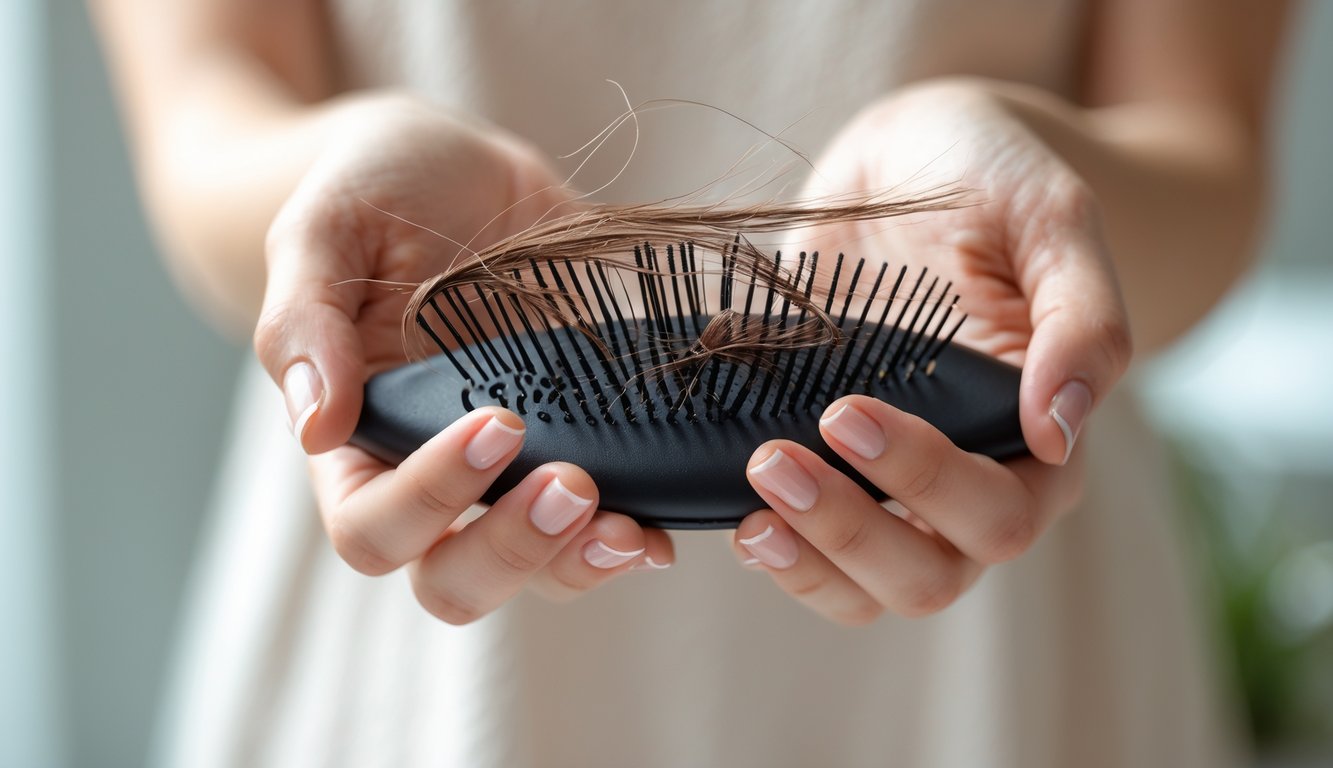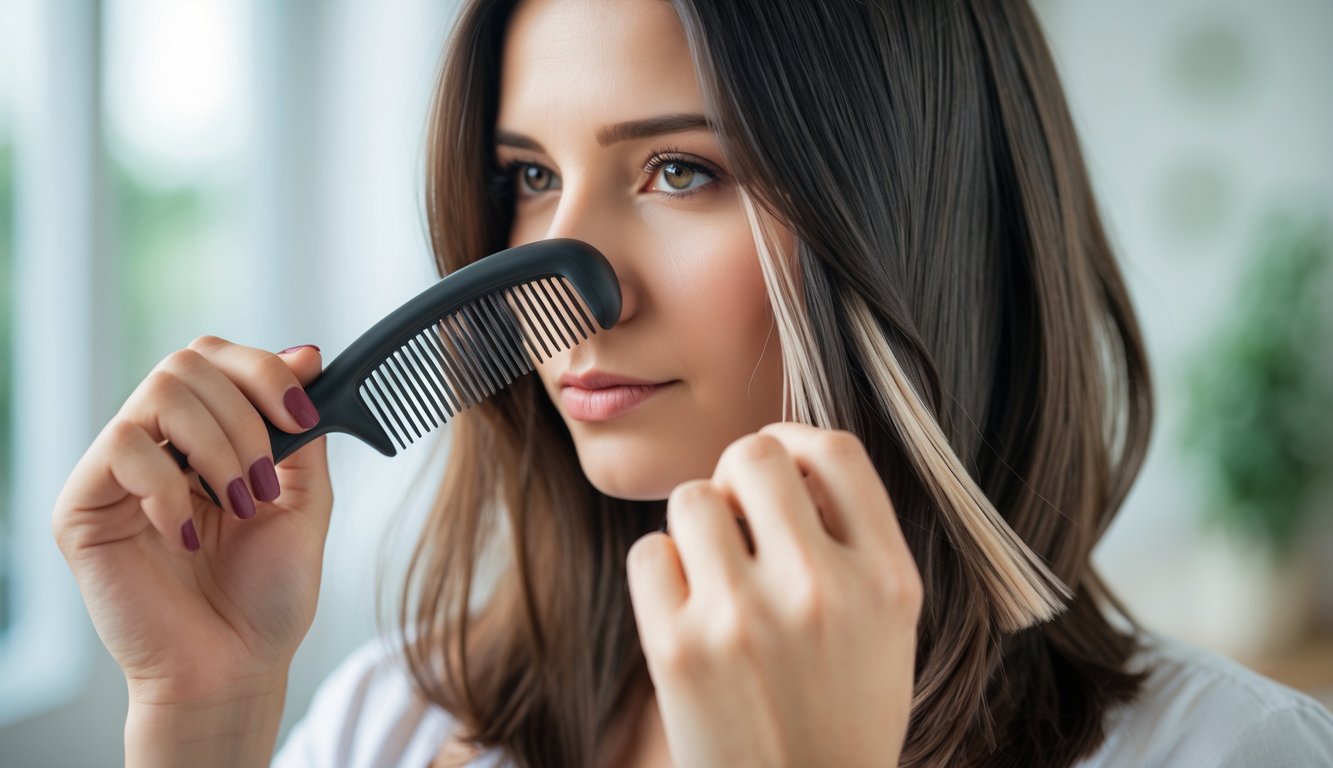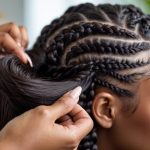
The Overlooked Home Tool: Brushing and Combing Mistakes
Ever drag a brush through a knot and watch a dozen broken hairs land on your sweater? That “gentle touch” myth—yeah, right. Everyone talks up “protective styles” and “hydrating oil,” but then forgets the easiest way to destroy your hair is with the most boring tool in your house. I’m guilty, and honestly, the sound of hair snapping? Haunts me.
Rough Brushing
Running late? I grab the nearest brush and just attack knots. It’s chaos, and weirdly satisfying until I see the split ends. Turns out, aggressive brushing is just friction—those dry little snaps mid-strand are dead giveaways.
Stylists always cringe when I admit how fast I brush. They say bristles shear the cuticle if you don’t start at the ends. That rough handling? It ruins the outer layer, turning smooth hair into a frizzy mess. Apparently, excessive brushing doesn’t help distribute oils or clean your scalp—it just yanks at fragile spots. This hair breakage mistakes overview pretty much calls the brush the enemy if you’re even a little too quick.
Brushing Wet Hair
Does anyone actually enjoy brushing conditioner through their hair in the shower, or is that just a myth passed around on TikTok? My friend swore it was the secret to “glass hair.” Tried it—regret it. Instant regret. Wet hair acts like it’s all soft and stretchy, but the second you drag a brush through, it’s like, congratulations, now you have twice the breakage and a bunch of split ends you can’t unsee. Why don’t more people warn you about this? Seriously, hairdressers get this haunted look if you even hint at brushing wet hair. I learned the hard way: unless you’re using a fat, wide-tooth comb or one of those detangler brushes that look like a weird sea creature, just don’t do it. If you have curly or bleached hair, you basically need a wide-tooth comb—it’s the only thing that doesn’t make your strands want to snap off in protest. I stumbled across some hair brushing mistakes article at 2am—honestly, should be required reading.
Using the Wrong Tools
Okay, confession: my bathroom drawer used to be a graveyard of those free combs from box dye kits. I thought they were fine? Yeah, turns out, they’re basically static-generating torture devices for your hair. Didn’t even know what a boar bristle brush was supposed to feel like until a friend forced one on me. Instantly less breakage, and my sink stopped looking like a squirrel exploded. Why are tight, fine-tooth combs even a thing? I swear, they do more damage than my flat iron ever did. Some stylists call those dense brushes “friction machines”—not wrong. There’s a million brands out there—Tangle Teezer, Wet Brush, whatever—and they all act like theirs is the golden ticket, but honestly, anything is better than a dollar-store brush. Even using the wrong brush for your hair type can wreck your cuticle or make frizz worse. Sometimes, no matter how gentle you are, you just can’t undo a month of using the wrong brush. I reach for the right one now, mostly out of muscle memory and, honestly, a little bit of trauma.
The Impact of Hairstyles on Hair Health

Once, I snapped a comb in my hair and ended up with a weird bump on my scalp for two days. And don’t even get me started on sleeping in a bun—tangled mess, sore scalp, and then I’m googling “why does my hair break off at the root.” Some styles are sneakier than others, and products? Sometimes they just make the whole situation messier.
Tight Hairstyles and Breakage
Edge control, those shiny baby hairs, hair pulled so tight you can’t blink—yeah, I’ve done all of it. Dermatologists are obsessed with warning everyone about constant tension from tight styles. Micro-braids, cornrows, anything called “snatched”—they all wreck the cuticle after a while. You see the damage eventually: little snaps all along the hair shaft, or worse, traction alopecia if you ignore it long enough.
People keep saying “protective” styles are safe, but honestly, if your scalp is throbbing or you can’t move your eyebrows, how’s that protective? I’ve tried flipping my part to give one side a break, but those thin patches still show up. Mayo Clinic says chronic tension is a top reason women lose hair at the hairline. Type of elastic? I mean, sure, satin scrunchies are nicer than those evil skinny black bands, but they’re not magic.
Protective Hairstyles
“Protective.” That word cracks me up. My stylist once pushed box braids as the answer to everything. Sure, you’re not frying your hair daily, but if the sections are tight, it’s just a slow-motion disaster. And don’t get me started on synthetic hair—sometimes the extensions weigh more than my actual head.
Breakage is sneaky. You think you’re fine, then suddenly you’re pulling handfuls out after a month. Sometimes that itchy scalp isn’t dryness—it’s just your hair follicles screaming from product gunk or tension. Experts say to rotate styles—buns one day, braids another, maybe just let your scalp breathe for once. I have a boar bristle brush just for taking down twists. It’s a pain, but it beats tearing out half my hair.
The Dangers of Tight Ponytails
I’ve lost count of how many bobby pins I’ve used to “secure” a ponytail, and the wrist dent from the elastic? That’s basically a red flag. Tight ponytails seem practical, but apparently, a 2023 study (thanks, WebMD) found that almost a third of women with chronic breakage wore tight ponytails most days. Not exactly shocking, but nobody notices until the damage is done.
Switching to low ponytails or silk ties sounds like it’ll fix everything, but if your hair is fine or you color it a lot (guilty), tension plus dryness is just a recipe for disaster. Dermatologists keep warning about styling wet hair, too, but does anyone actually listen? My current rule: if the elastic leaves a mark on my wrist, it’s not going near my head. My collection of “no-breakage” products is bigger than my actual hairbrush stash, and my cat’s the only one in the house with a full, healthy coat.



